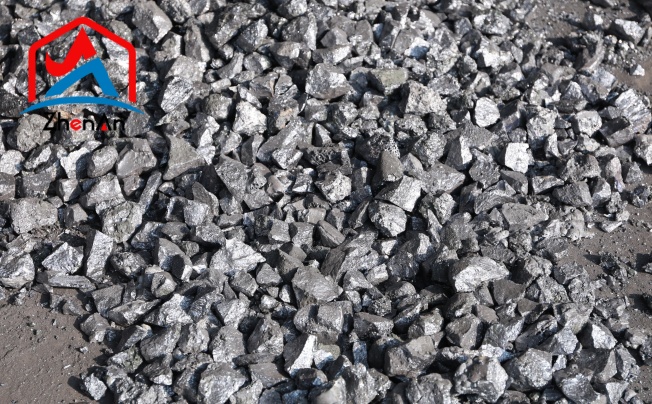Location of Graphite Deposits Worldwide
Graphite deposits are found all over the world, with significant reserves located in countries such as China, India, Brazil, and Canada. These regions have geological formations conducive to the formation of graphite, including metamorphic rocks like schist and gneiss, which provide the necessary conditions for graphite crystallization.
In Africa, countries like Madagascar and Mozambique also boast substantial graphite reserves due to their rich mineral landscapes. Understanding the distribution of graphite deposits worldwide is crucial for economic development and resource management.
Exploration Techniques for Identifying Potential Graphite Reserves
Exploration techniques play a vital role in identifying potential graphite reserves before commencing mining operations. Geophysical surveys using techniques like electromagnetic induction and ground-penetrating radar can help geologists locate subsurface graphite deposits based on variations in rock density and composition.
Methods of Extraction: Open Pit Mining, Underground Mining, etc.
Once potential graphite reserves are identified, various extraction methods can be employed, depending on factors like deposit depth, size, and quality.
Open-pit mining is commonly used for shallow deposits where ore is extracted from the surface using heavy machinery like excavators and trucks. This method is cost-effective but may result in significant environmental disturbance. In contrast, underground mining is suitable for deeper deposits where tunnels are dug to access the ore using shafts or adits. This method ensures minimal surface disruption but requires more intricate engineering and safety considerations. Other extraction techniques include quarrying and borehole mining, each tailored to specific geological conditions to maximize efficiency while minimizing environmental impact.
Purification and Refinement Process
Crushing and Grinding
To extract the mineral concentrate from the ore, it is crushed into smaller fragments using crushers and then ground into finer particles in mills. This process aims to liberate the graphite particles from the surrounding rock and prepare them for subsequent purification steps.
The crushing and grinding stages are crucial in breaking down the raw graphite ore into a manageable size for further processing. Crushing helps to reduce large chunks of ore into smaller pieces, facilitating efficient grinding.
The grinding process then refines these smaller particles into a fine powder, enhancing the surface area available for chemical reactions during subsequent purification steps. This meticulous process ensures that only high-quality graphite concentrate moves forward for refining.
Flotation Process
Flotation is a widely used technique in mineral processing to separate valuable minerals from unwanted impurities based on their hydrophobicity.
In this context, it serves as a vital step in purifying graphite concentrate by selectively attaching air bubbles to hydrophobic graphite particles while repelling hydrophilic impurities. During flotation, chemicals called collectors are added to create air bubbles that adhere specifically to graphite surfaces due to their hydrophobic nature.
These bubbles lift the graphite particles to the surface of a flotation cell while leaving impurities behind in the slurry. Through careful control of pH levels, agitation, and frother additives, operators can optimize separation efficiency and produce a high-purity graphite concentrate ready for further processing towards commercial applications.
This intricate flotation process not only enables the effective separation of impurities but also plays a critical role in determining the final quality of commercial-grade graphite products. By harnessing principles of surface chemistry and selective adhesion properties, manufacturers can refine raw materials with precision and accuracy, ensuring that each batch meets stringent quality standards demanded by various industries reliant on superior-grade graphite materials.
Synthesis Methods for Artificial Graphite Production
High-Temperature Treatment of Carbon Precursors
In the realm of artificial graphite production, the journey begins with carbon precursors such as petroleum coke or coal tar pitch. These raw materials serve as the foundation for creating high-quality synthetic graphite through a carefully orchestrated process involving extreme heat.
The carbon precursors undergo a rigorous high-temperature treatment in specialized furnaces, typically reaching temperatures exceeding 2500 degrees Celsius. This intense thermal environment triggers a series of chemical reactions that transform the precursor material into crystalline graphite structures.
The graphitization process involves heat treatment
The graphitization process represents a critical stage in transforming carbon precursors into premium-grade artificial graphite. Following the initial high-temperature treatment, the precursor material enters a specialized graphitization furnace, where it undergoes further heat treatment at extreme temperatures.
Whether derived from petroleum coke or coal tar pitch feedstocks, artificial graphite production necessitates precision engineering during both high-temperature treatment and subsequent graphitization stages. The artful mastery of manipulating thermal dynamics enables manufacturers to craft bespoke grades of synthetic graphite tailored to meet stringent performance requirements in an ever-evolving industrial landscape.
Shaping and Finishing Techniques
Crafting Graphite’s Form
One common technique is extrusion, where a mixture of graphite powders and binders is forced through a die to create cylindrical or intricate shapes.
Isostatic pressing, on the other hand, applies uniform pressure from all directions simultaneously to produce components with consistent density and strength.
Surface Finishing Processes
Polishing is a common technique used to refine the surface of graphite components, resulting in a smooth texture that improves performance and aesthetics.
Coating processes involve applying thin layers of materials such as metals or polymers onto the surface of graphite products to enhance properties like conductivity, corrosion resistance, or lubrication. These finishing touches not only add functional benefits but also contribute to the overall quality and durability of graphite-based products in diverse applications.
Commercial Applications of Graphite Products
Revving Up the Automotive Industry
One of its key applications is in brake linings, where graphite's heat resistance and lubricating properties are harnessed to improve braking performance and longevity. Gaskets, another essential part of automotive engines, often incorporate graphite due to its ability to withstand high temperatures and pressures, creating reliable seals that prevent leaks.
Additionally, graphite's lubrication qualities make it an ideal additive in engine oils and greases used for the efficient functioning of moving parts in vehicles. Its presence ensures reduced frictional losses and enhanced engine performance.
Powering the Electronics Sector
In the fast-paced world of electronics, graphite emerges as a crucial component in a wide array of products. Batteries rely on graphite as an electrode material due to its ability to store and release electrical energy efficiently.
The use of graphite electrodes in lithium-ion batteries is particularly widespread, contributing to the widespread adoption of rechargeable devices such as smartphones and electric vehicles. Furthermore, semiconductors, the backbone of modern electronics, often contain graphite because of their electrical conductivity properties that enable precise control over electronic signals within integrated circuits.
Forging Ahead in Metallurgy
The metallurgy industry heavily depends on graphite for applications requiring high-temperature resistance and stability. Crucibles made from graphite are indispensable tools for melting metals at extreme temperatures without contamination or degradation, making them essential in processes like metal casting and alloy production.
Graphite molds are extensively used across various metalworking techniques, facilitating the precision, shaping, and solidification of molten metals into intricate forms. Moreover, refractory materials enriched with graphite exhibit exceptional heat resistance properties, making them ideal for lining furnaces used in metal smelting operations where extreme temperatures are involved.






